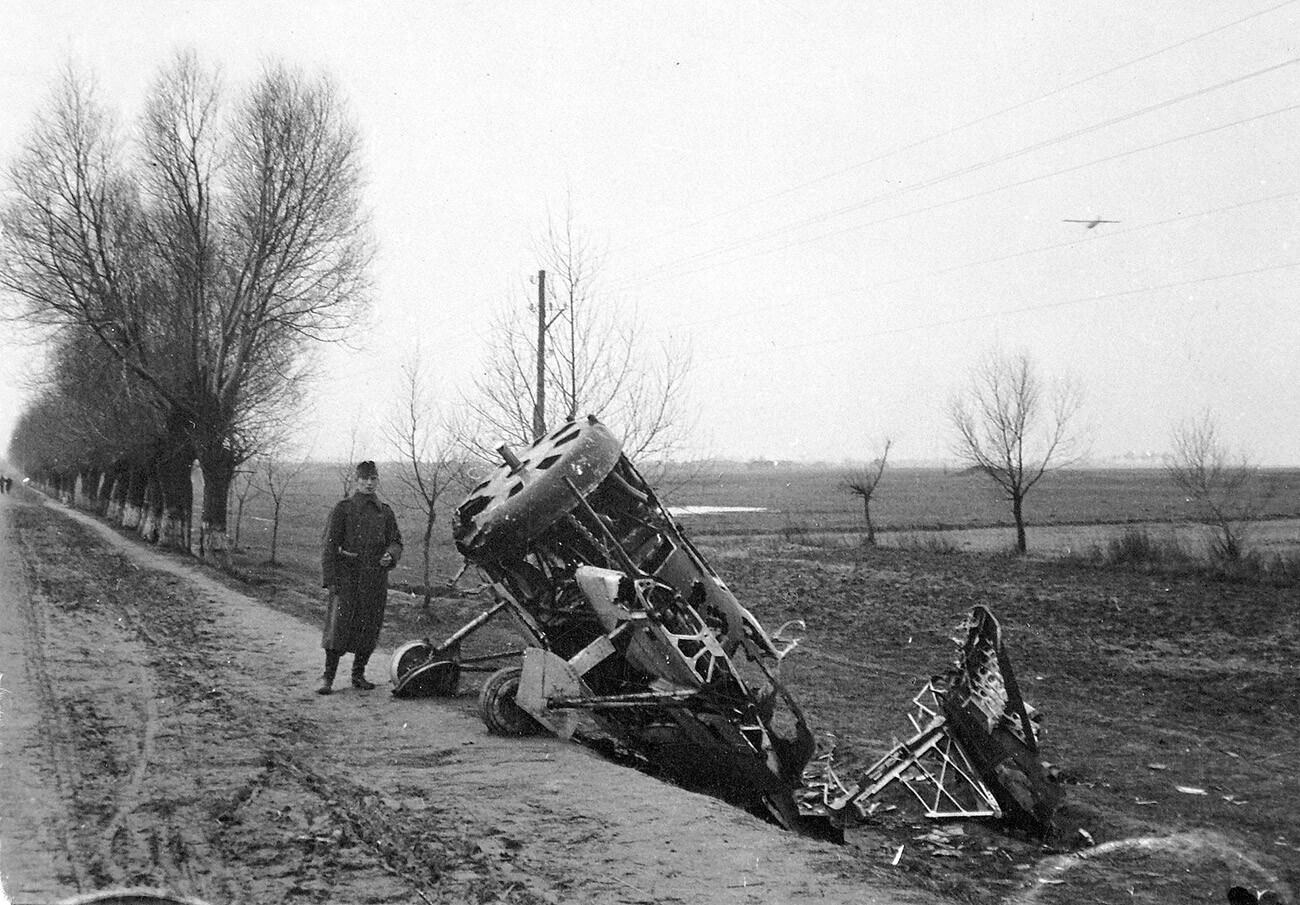
Soviet I-16 fighter plane.
Public DomainThis barrel-shaped monoplane with an open cockpit was one of the main symbols of the Red Army Air Force in the 1930s. Developed by Nikolai Polikarpov's design bureau in 1933, the I-16 ("the Sixteenth fighter") was called ‘Ishak’ or ‘Ishachok’ (‘Donkey’ or ‘Little Donkey’ in Russian) in the USSR.

The aircraft could reach speeds of up to 470 km/h, which was fast for those times, and was distinguished by its excellent maneuverability, which was ensured by shifting the center of gravity of the machine to the rear. The rearward alignment, however, made the fighter aerodynamically unstable and tough to pilot.
"Reacts to the slightest deviation of the rudders," pilot Nikolai Shapovalov told about his experience of piloting the I-16. “When you pull the handle, it will tremble and go into a tailspin… As soon as I start a turn - I go into a tailspin. If the turn is performed correctly, you will fall into the flow of your airplane and the airplane will shake."
Pilot Sergei Nasilevits recalled how the head of his aviation school used to admonish young graduates: "If you have mastered the I-16, you can fly any type of aircraft. This is the most rigorous machine. There is no pilot who couldn’t land any other machine after the I-16!"
The airplane did not forgive mistakes and only high-level professionals flew it. Thus, it was the I-16 that was used by the first Soviet ‘Red Five’ aerobatic group.

The combat debut of the ‘Ishachok’ took place during the Spanish Civil War. Soviet fighters turned out to be a formidable opponent for the Frankists – they surpassed both German He-51 and Italian FIAT C.R.32 fighters in speed, maneuverability and high-speed lift.
Nationalists nicknamed the I-16 ‘Rat’ (‘Rata’) – it seemed to them that the elusive Soviet planes during the attack jumped out as if from under the ground. The Republicans, on the other hand, dubbed the fighter ‘Fly’ (‘Mosca’).

An I-16 fighter plane is suspended under the wing of a TB-3 heavy bomber.
Pashin/SputnikMeanwhile, the war in Spain showed that the armament of the ‘Ishak’ was insufficient.Thus, the Soviet aircraft had two 7.62-mm ShKAS aircraft machine guns, while its Italian counterpart had two 12.7-mm machine guns. The number of machine guns was eventually increased to four.
Later, modifications of the I-16 in addition to the SHKAS were equipped with aviation automatic cannons SHVAK or launchers for unguided rockets RS-82.

The dominance of the Soviet fighter in the Spanish skies came to an end in 1939 with the appearance of the Messerschmitt Bf-109. The ‘Ishak’ was inferior to it in all parameters, except maneuverability.
In addition to the Iberian Peninsula, I-16s participated in combat operations against Japanese aircraft in China (the Chinese nicknamed them ‘Swallows’) and during the conflict at Khalkhin-Gol, as well as against Finnish troops during the ‘Winter War’.

A I-16 fighter shot down in Finland during the Winter War.
Public DomainBy the beginning of the war against Nazi Germany, the ‘Ishachoks’ were already badly outdated. Nevertheless, they accounted for about a quarter of all Soviet fighters on the western border of the USSR and, in the first days of the war, offered fierce resistance to the enemy.
According to one version, it was the I-16 that shot down the first German airplane in the USSR. Luftwaffe pilots treated their old acquaintance without any disdain. They tried to avoid close maneuvering combat with such aircraft, because they knew that the ‘Rat’ should not be cornered.

A I-16 fighter shot down in 1941.
Ungváry Krisztián/Fortepan (CC BY-SA 3.0)Later on, the ‘Ishaks’ gave way to their more modern counterparts on the front line and were increasingly engaged in guarding cities and rear facilities in air defense units. They were also used for training of flying personnel.
With the end of the war, the operation of the legendary fighters came to an end. Ironically, they served the longest time with their opponents – the Frankists. In Spain, dozens of captured I-16s were in service until 1953.

If using any of Russia Beyond's content, partly or in full, always provide an active hyperlink to the original material.
Subscribe
to our newsletter!
Get the week's best stories straight to your inbox